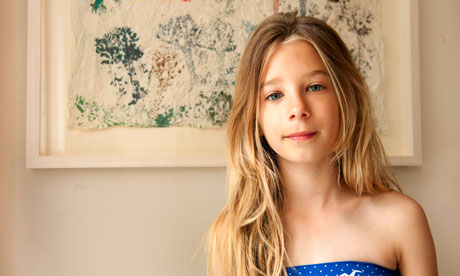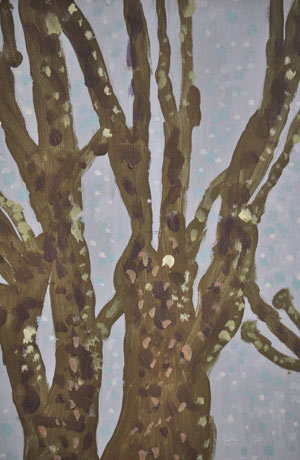The three children who have had work selected to appear alongside some fabulous artists such as Tracey Emin and Michael Landy are aged nine and ten. Pretty young, I'm sure you'll agree, to be making art of such note. It made me think about why I appreciate modern art. My response to a piece at the most basic level: do I like to look at it. I want to feel something in return, yes, but I also want to know more about the process the artist used; not just how they made it, but why they made it. I adore Tracey Emin's work, but at first glance you might think "oh, anyone could have done that". But not anyone did. She did, and her work explains why she did. Where the beach hut came from, why the bed is unmade.
We've all seen art in galleries and thought, goodness me, what were they thinking when they did that bloody mess? But if I have a sense of what the artist wanted to say, that usually trumps what it even looks like - for me, at least.
I've only seen two of the children's pieces. Tree, by Felix Chadwick-Histed, and Poppy Sendell's lino print (of trees as well).

Poppy Sendell with her lino print

Trees, by Felix Chadwick-Histed
Both pieces are lovely. I enjoy looking at them, but I have neither emotional response nor attachment. To have that, the artist needs to have put it there in the first place. How much angst, unhappiness, love or emotion, can a ten year old really have experienced?
Read more in the Guardian.
1 comment:
Too true. I tend to agree that some sense of deep and meaningful art generally comes from the loss that helps us gain insight and perspective. Then again, the phrase art for art's sake does not discriminate. Consider the Thai elephant art (if you are aware of it). I'm sure the elephant does have angst, and has been through many low points in his or her life. However, we wouldn't look at elephant art with a sudden inquiry into where the elephant was coming from. Am I getting to something? Perhaps not. Thanks for your insight though. :)
Post a Comment